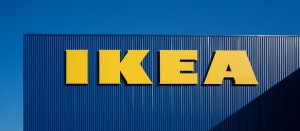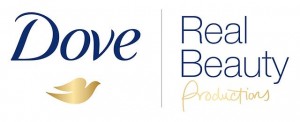Brand Awareness is, in short, the extent to which your business is recognized. Brand identity is your logo, colours, what you offer, your message, services, among other features.
Why is it important? Your brand identity is your first touchpoint with a potential customer – the stronger the image of your brand in someone’s mind, the more likely they are to engage with you. Unknown businesses aren’t seen as trustworthy – so how do you go about raising the profile of your business and gaining more loyal customers?
- Brand Accessibility
- Building Your Brand
- Strengthening Your Brand
- Examples of Strong Brand Identity
Brand Accessibility
 When developing or auditing your brand identity, be sure to read the Web Content Accessibility Guidelines (WCAG) to ensure that your published content (text, images, sound, etc.) is accessible to everyone. This will ensure you don’t lose potential customers due to flaws in design and adaptability for mobile phones.
When developing or auditing your brand identity, be sure to read the Web Content Accessibility Guidelines (WCAG) to ensure that your published content (text, images, sound, etc.) is accessible to everyone. This will ensure you don’t lose potential customers due to flaws in design and adaptability for mobile phones.
Building Your Brand

So – how do you actually go about building a brand?
Audience: A good first consideration is always your audience. The content you post online, the logo and the colours should resonate with your audience as much as possible. For example, pink and purple are probably not the best colours for an accounting firm, but will resonate with women and younger teenage girls when purchasing handmade products or clothing. Considering and weighing audience behaviors might be tricky at first, but the more previous customer interactions you had the easier this should be. Analyzing age, income, occupation and location is a good first step.
Visual Identity: That is the nitty gritty of design – your logo, colours, pictures, mottos, theme songs; anything you can think of that represents your brand. Deciding on design features might be a little daunting, but originality that reflects audience behaviours will yield results. Ask yourself the following questions:
- What is the mission of your brand?
- What makes you different from your competitors?
- How do you want customers to experience your brand/product/service?
- What kind of emotions are you hoping to evoke?
Consistent Message: That is, your tone and message across all platforms. Contradicting statements, message or voice will decrease your brand awareness. Tone should reflect the uniqueness of your business/service and communicated appropriately across all platforms you use.
Strengthening Your Brand

So, you built your logo, decided on a colour palette and the purpose is clear in your mind. How do we them strengthen it?
Multi Channel Presence: that is a secure foothold in the door with different social media apps, emails, SMS and non-digital tools is the key to growing your brand as you will reach more customers and start building a trusting relationship. Remember – your presence and content should be adapted to each medium accordingly.
Community Connection: The easiest way to build trust between potential customers and your business is community connection; that is the way your brand interacts with the world around us and the community. This could be as simple as customer testimonials that show your brand is trustworthy, or could stretch beyond that into social causes or local, community-oriented issues. This could simply be acknowledgement of community struggles, a recent event or issue or contribution to the community through donations or other aid.
Face to your brand: Adding a face to your brand will humanize your business and make you seem more approachable and trustworthy. Whether through pictures of your employees or using personal language, any form of direct interaction will bring you closer to your customers.
Examples of Strong Brand Identity
Apple

The first thought that comes to mind when thinking Apple, or so Apple would like, is innovation and reinvention. Through every update and new product launch, at the forefront we see the portrayal of creating something new and different every time, whether the products released are actually innovative is a different story. Their entire brand is cutting-edge, inviting their customers to join them at the brink of innovation and always breaking the mold.
Coca-Cola

Besides being the most established and longest-going fizzy drink company, their brand identity is so strong that just the colour red is often associated with Coke. They’ve aligned themselves with the feeling of happiness and enjoyment through their advertising and presence online, which is often kept lighthearted and casual. The motto ‘A Coke and a smile’ sums up their values very clearly, and even if you are not an avid enjoyer of the drink, ask yourself how often do you think of coke on a daily basis.
Ikea

Ikea created an image of themselves as simple and family-oriented, and they stay in that category. From simple instructions when building the furniture to the simple and lighthearted advertising, Ikea is the first stop when shopping for furniture as it is meant to appeal to everyday people. Their tagline ‘Wonderful Everyday’ reflects their one-stop-shop ideology.
Dove

A very simple yet elegant brand targeted towards woman and girls is a prime example of effective branding. Their campaigns focus on empowering women and addressing issues such as self-esteem, body image and equality. They are a prime example of involvement in social issues to strengthen their community presence. Dove promotes honesty and optimism, embracing natural beauty through their products.
How Can We Help?
If you’re struggling with brand identity and developing your business identity, Local Pages is here to help! You can schedule a free consultation by clicking here.
Leave a comment on Brand Identity: How to Build and Maintain Your BrandCategories Advertising, Blog, Branding, Business Tips, Creative, Design, Help & Advice, Marketing, Media, Sales, Small businesses, Social media, Websites




